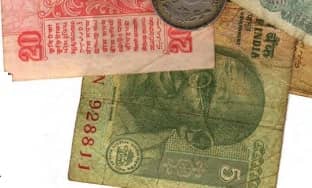NCERT Economics Class 10 | Money as a Medium of Exchange Notes
Topic & sub-topics covered: Money as a Medium of Exchange: Money and Credit (All single detail notes are exam-oriented).
We have discussed in-depth and exam-oriented pointers that can be asked in the board exam of class 10th about “Money as a Medium of Exchange” which is taken from the NCERT Economics notes for class 10th chapter 3 “Money and Credit“.
Download the NCERT Economics for Class 10th Chapter 3 Money and Credit Notes PDF
Looking to grasp the concepts of money and credit in NCERT Economics for Class 10th? Look no further! Download the comprehensive Chapter 3 Money and Credit Notes PDF now and unlock a treasure trove of knowledge.
NCERT Class 10 Economics Chapter 3 Money and Credit Class 10th PDF Notes
Delve into the intricacies of monetary systems, explore the role of credit in the economy, and understand the mechanisms of banking and financial institutions. Our meticulously prepared notes provide concise explanations, illustrative examples, and insightful analysis to deepen your understanding of this crucial subject. With a clear focus on exam preparation and academic excellence, our PDF notes offer a structured approach to learning, helping you grasp complex concepts with ease.
Gain confidence in your knowledge and ace your exams with the help of our top-quality study material. Don’t miss out on this opportunity to elevate your learning experience – download the NCERT Economics for Class 10th Chapter 3 Money and Credit Notes PDF today!
Money as a Medium of Exchange

1. Role of Money in Daily Transactions:
- Money is extensively used in daily life for various transactions involving buying, selling, and exchanging goods and services.
2. Types of Transactions with Money:
- Transactions can involve buying and selling goods, exchanging services for money, or making promises to pay money later.
3. Convenience of Using Money:
- Money facilitates easy exchange as individuals prefer receiving payments in money, which can then be exchanged for desired commodities or services.
4. Example of Shoe Manufacturer:
- Consider the example of a shoe manufacturer who first sells shoes for money and then uses the money to buy wheat, showcasing the utility of money in transactions.
5. Elimination of Barter System Challenges:
- Money eliminates the challenges of the barter system, such as the need for a double coincidence of wants, where both parties must desire each other’s commodities for an exchange to occur.
6. Double Coincidence of Wants Defined:
- Double coincidence of wants refers to the situation where what one person wants to sell matches precisely with what another person wants to buy, which is essential in a barter system.
7. Role of Money as a Medium of Exchange:
- Money serves as an intermediary in exchanges, removing the requirement for double coincidence of wants and simplifying transactions in an economy.
8. Facilitating Trade and Commerce:
- By acting as a medium of exchange, money facilitates trade and commerce by enabling individuals to easily exchange goods and services without the limitations of the barter system.
9. Convenience for Economic Participants:
- Participants in the economy benefit from the convenience of using money, as it streamlines transactions and expands opportunities for buying and selling various goods and services.
10. Significance of Money in Economic Activities:
- Money’s role as a medium of exchange is crucial for the smooth functioning of economic activities, promoting efficiency and enabling specialization in production and consumption.
Next & Previous Topics of NCERT/CBSE Economics Class 10 Chapter 3: Money and Credit
FAQ
Q1. What role does money play as a medium of exchange? or why money as a medium of exchange?
Answer: Money acts as an intermediary in exchanges, simplifying transactions by removing the need for a double coincidence of wants and facilitating trade and commerce.
Q2. Explain money as a medium of exchange in short.
Answer: Money serves as a medium of exchange by acting as a universally accepted intermediary in transactions. In essence, it facilitates the buying and selling of goods and services by providing a standardized unit of value that individuals can use to conduct exchanges.
Q3. What is the role of money in daily transactions?
Answer: Money plays a vital role in daily transactions by facilitating the buying, selling, and exchanging of goods and services in various economic activities.
Q4. Can you explain the utility of money with an example?
Answer: Certainly, consider a shoe manufacturer who sells shoes for money and then uses that money to purchase wheat. This demonstrates how money facilitates transactions by allowing individuals to convert the value of their goods into a universally accepted medium for further exchanges.

